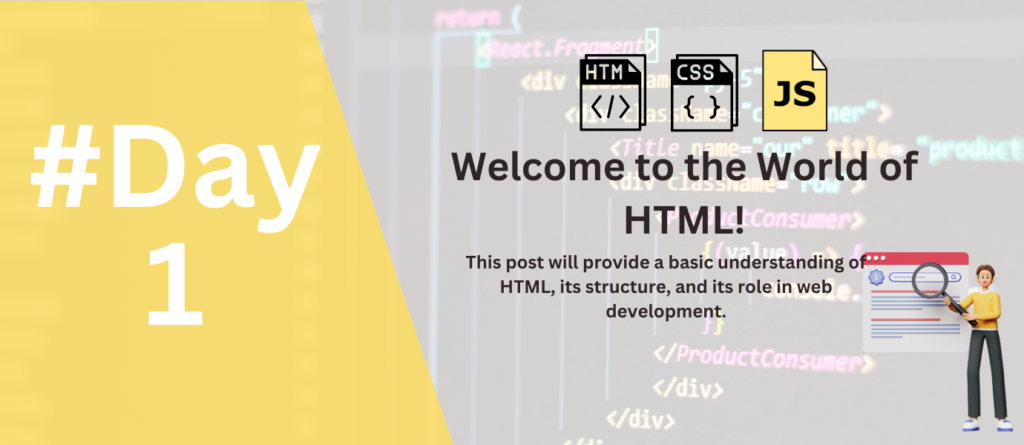Welcome, fellow web enthusiasts, to the Day 1: Welcome to the Wonderful World of HTML! of our exciting journey into the world of website development! Today, we’ll take our first steps into the realm of Hypertext Markup Language (HTML), the fundamental building block of any website.
What is HTML?
Imagine building a house. You wouldn’t just start throwing bricks together, would you? You’d need a blueprint, a plan for how to arrange the bricks and other materials to create a sturdy, functional structure. That’s exactly what HTML does for websites.
HTML stands for Hypertext Markup Language. It’s a set of codes that provides the structure and organization for displaying text, images, and other elements on your web pages. Without HTML, your website would be nothing but a blank canvas, devoid of any content or functionality. Think of it as the skeleton upon which your website is built.
The Basic Structure of HTML:
Every HTML document starts with a basic structure:
- <!DOCTYPE html>: This code tells the browser what kind of document it is.
- <html>: This tag marks the beginning of your HTML document and acts as the container for all other elements.
- <head>: This section holds information about your website, such as the title, character encoding, and other metadata invisible to users but crucial for search engines and browsers.
- <body>: This tag encloses the visible content of your website, where you’ll find text, images, links, and other interactive elements.
Building Your First Website:
Ready to get hands-on? Here’s how to create your first simple HTML document:
- Open a text editor: Any basic text editor like Notepad or Sublime Text will suffice.
- Save the file with the .html extension: For example, save your file as “index.html” or “my_first_website.html”.
- Write the basic HTML structure: Copy and paste the following code into your text editor:
HTML Code :
<!DOCTYPE html>
<html>
<head>
<title>My First Website</title>
</head>
<body>
<h1>Welcome to the World of Web Development!</h1>
</body>
</html>Open the file in your web browser: Double-click the saved HTML file to view your creation.

You’ve just built your first website, albeit a simple one. This basic structure serves as the foundation upon which you can build increasingly complex and engaging web pages.
Beyond the Basics:
Our journey into HTML has just begun. In the coming days, we’ll delve deeper into the vast world of HTML, exploring various tags and attributes to build captivating website layouts and add exciting content. Make sure to stay tuned for the next blog post in this series, where we’ll delve into the world of CSS and introduce visual styles to your website!
Don’t forget to leave a comment below with your questions and suggestions! We love hearing from our community.
Subscribe to our blog to stay updated on the latest web development tutorials and tips!
Together, let’s build amazing things online!




